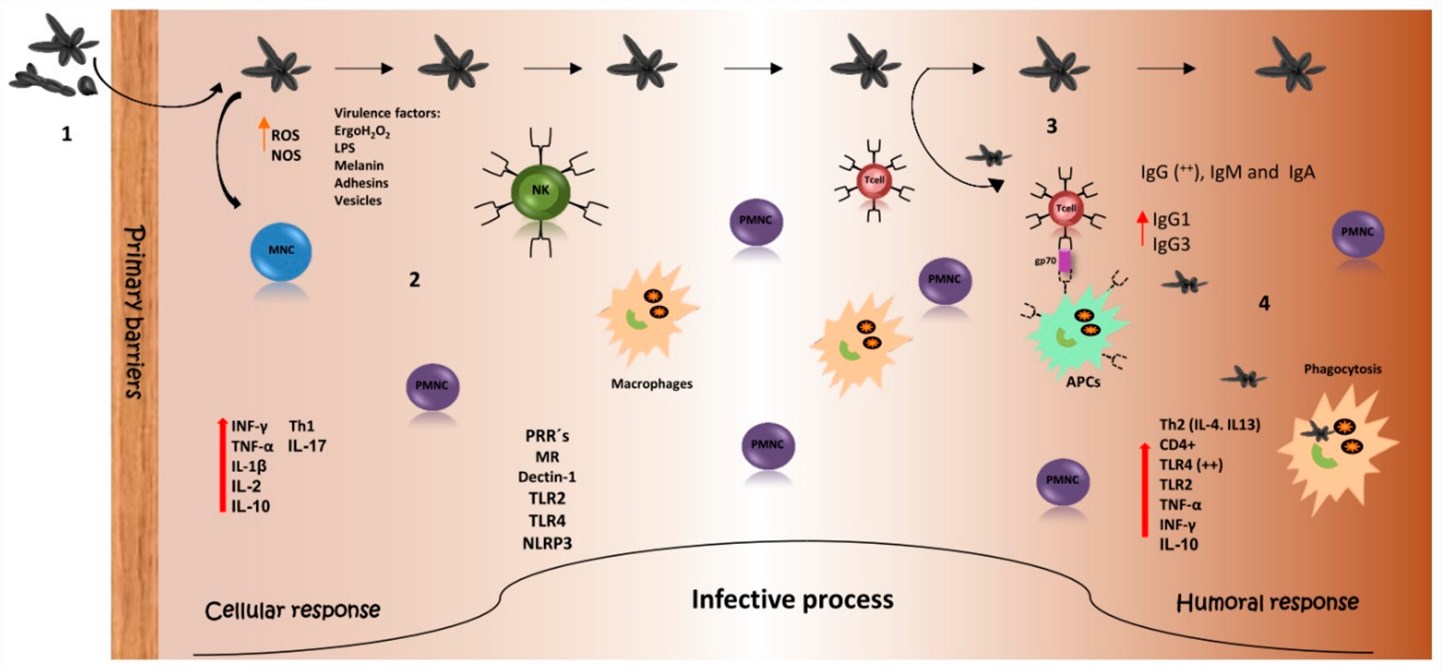Sporotrichosis
As a pioneer company in the field of antifungal drug discovery, Creative Biolabs has gained a wealth of good reputation for successfully completed a series of challenges. Based on years of experience, we are capable of providing a full range of target screening and identification services for the treatment of numerous kinds of fungi infections. Now, we are happy to introduce our high-quality antifungal drug discovery service against sporotrichosis.
What is Sporotrichosis?
Sporotrichosis, also known as “rose gardener’s disease”, is a rare type of fungal infection that can occur in both humans and animals. It is caused by a fungus called Sporothrix, usually Sporothrix Schenckii, which can be found in certain plants and their surrounding soil. People acquire sporotrichosis by traumatic coming in contact with the fungal spores in the environment. Generally, cutaneous (skin) infection is the most common form of the infection. It occurs when the fungus enters the skin through a small cut or scrape, usually after handling contaminated plant matter. Though uncommon, pulmonary (lung) sporotrichosis and disseminated sporotrichosis sometimes also occur, especially in patients with weakened immune system.
 Fig.1 Host immune response against Sporothrix spp.1
Fig.1 Host immune response against Sporothrix spp.1
Symptoms of Sporotrichosis
When the skin or tissues underneath the skin infected with Sporothrix, the symptoms often start off mild within the first several weeks of exposure. Usually, a small, painless bump can be developed at the site of exposure any time from 1 to 12 weeks after exposure to the fungus. As the infection progresses, the bump will eventually grow larger and may look like an open sore or ulcer that is very slow to heal. As to pulmonary (lung) sporotrichosis, typical symptoms include cough, shortness of breath, chest pain, and fever. Furthermore, symptoms of disseminated sporotrichosis depend on where the fungus is growing. For example, infections of the joints cause joint pain, while infections of the central nervous system can involve difficulty thinking, headache, and seizures.
Diagnosis of Sporotrichosis
Nowadays several methods of sporotrichosis diagnostic are available. Generally, clinical suspicion is the key to early diagnosis. To properly diagnose sporotrichosis, a small tissue sample (biopsy) of the infected area will be sent to laboratory for test (usually a fungal culture) to find out which kind of Sporothrix cause the infection. Blood tests can help diagnose severe sporotrichosis, sometimes also help diagnose severe forms of cutaneous sporotrichosis. Furthermore, immunological tests and histopathological analysis can also be used for the diagnosis of sporotrichosis.
Treatment of Sporotrichosis
Sporotrichosis is not life-threatening but must be treated with proper antifungal drugs. For cutaneous (skin) infections, the most common treatment is itraconazole. Supersaturated potassium iodide (SSKI) is another treatment option for cutaneous (skin) sporotrichosis. Amphotericin B is more proper for the treatment of patients with severe forms of sporotrichosis. Furthermore, people with sporotrichosis in the lungs may also need surgery to cut away the infected tissue.
Types of Fungal Diseases Studied by Creative Biolabs
Aided by top technology and professional scientists, Creative Biolabs is committed to promoting the development of global customers’ programs. In addition to sporotrichosis, we also provide potential antifungal drug discovery services against other fungal diseases, which including but not limited to:
If you are interested in the fungal disease we investigate, please click the links above. For more detailed information, just feel free to contact us.
Reference
- Garcia Carnero, Laura Cristina, et al. "Immunity and treatment of sporotrichosis." Journal of Fungi 4.3 (2018): 100. Distributed under Open Access license CC BY 4.0, without modification.
For Research Use Only.
